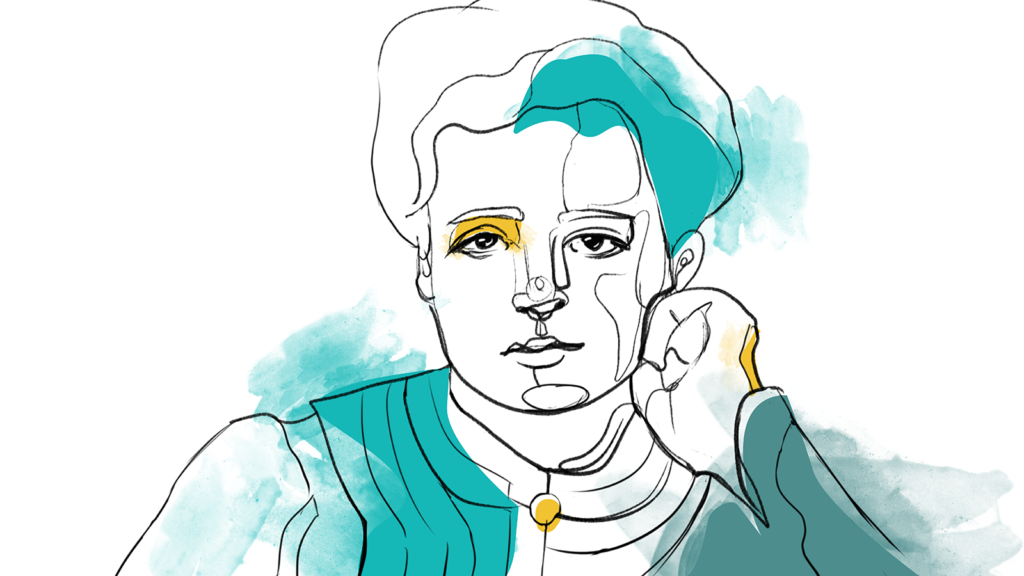Marie Curie was a woman of firsts. Born in 1867 in Warsaw, Poland, she was a child prodigy in literature and mathematics. She worked as a governess until the age of 24 to save money for school, where she became the first woman in France to earn her Ph.D.
She studied uranium, a radioactive element that was not well understood at the time. Curie discovered two new elements, radium and polonium, and concluded that these elements are responsible for uranium’s radioactive properties. She went on to apply her findings to create cancer treatments and advance x-ray technology.
Curie became the first woman to win a Nobel Prize in 1903. Then, in 1911, she became the first person to win two Nobel Prizes, and still holds the record as the only woman who has earned two Nobel Prizes in two different fields (Physics and Chemistry).
It’s an understatement to say that she profoundly impacted the world with her ideas, and there is a lot to learn from her approach to problem-solving. Let’s have a look at how you can learn to think more like Marie Curie, and apply her thinking strategies in your daily life and work.
This article is part of the Brilliant Thinkers series, which explores the thought processes, working habits, and decision-making principles applied by intellectuals who profoundly impacted the world with their discoveries and the way they challenged the status quo.
Marie Curie’s thinking strategies
An extraordinary scientist, Marie Curie relied on three key strategies to navigate the world, make decisions, collaborate with others, and explore new ideas.
1. Embracing the unknown. Science operates in a world of unknowns. Still, even scientists struggle with accepting new thoughts or approaches that conflict with their understanding of the world. However, Marie Curie was not afraid of new ideas. She proffered her own “daring hypothesis” early in her career that caused a scientific stir.
At the time, scientists thought that radiation came from interactions between two molecules. However, they were not sure which molecules or how the interactions occurred. Curie proposed that radiation did not come from two molecules; instead, it came from sub-molecules. This idea challenged the widely-held belief that atoms did not have any sub-particles.
Undeterred, Curie continued her work and found the two sub-particles that caused radiation: radium and polonium. She won the Nobel Prize for this research in 1903.
2. Making radical bets. Sometimes, the most radical bet you can make is the bet you make on yourself. Marie Curie had the confidence to bet on herself, despite a cascade of misogynistic criticism that gave her husband and lab partner, Pierre Curie, much credit for their work. When Pierre died unexpectedly, colleagues expected Marie to accept her widow’s pension and step down from the lab. Instead, she did the exact opposite; believing in her abilities, she stayed at the university, Sorbonne, and took over the lab herself.
3. Sharing her ideas. Marie Curie was not interested in keeping her research isolated in the laboratories of chemistry or physics departments. Instead, she would work with anyone interested in radiation, including people in healthcare. In fact, during World War I, Curie used her work to equip ambulances with x-ray machines. She even drove the ambulances herself to help soldiers who needed medical care.
How to think like Marie Curie
We live in an unpredictable world filled with unknowns. However, fear of the future can paralyze us, making it difficult to engage in creative problem-solving and strategizing. Also, if we create work cultures that are too risk-averse, we can unintentionally stymie innovative contributions. Thinking like Marie Curie requires rethinking our relationship with risk.
It also requires learning how to bet on ourselves. Marie Curie did not let other people’s prejudices against women get in the way of her work. She made decisions about her career because she valued the power of science. Betting on ourselves means believing in ourselves and making choices based on our values.
Finally, we may not want to share our ideas before they are “ready.” However, sharing ideas can be a great way to connect with others inside and outside your field. Sharing also provides an opportunity to receive feedback from many different perspectives. Sharing doesn’t have to be scary. It can mean a call to a trusted colleague or a post in a LinkedIn group; whatever feels the most comfortable for you.
Here are three practical questions you can ask yourself in order to think like Marie Curie:
- What is a small risk that you can take right now to improve your work or personal life? What might happen if you take that risk? Focus on the possible positive outcomes to encourage yourself to act.
- Are your work, school, or personal decisions aligned with your personal values? Are you making decisions based on these values? If not, what small steps can you take to become better aligned?
- How comfortable do you feel sharing your ideas with the world, even when they are half-baked? Is there an idea you have been sitting on that you could share with someone to get their feedback?
Marie Curie remains one of the most important scientific figures in history. She embraced the unknown, always bet on herself, and took her findings out of the lab and into the world. To follow her lead, we must be willing to face an uncertain future, have the confidence in ourselves to tackle whatever challenge comes our way, and surround ourselves with a community that allows for free, open exchange of ideas.

